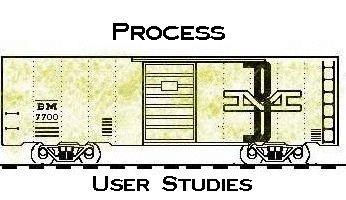
 User Studies: SUSE Focus Groups
User Studies: SUSE Focus Groups
Background
Methodology
Limitations
Results
Background
As a member of the Stanford University School of Education (SUSE) I have had the good fortune to work with students in many programs, particularly the Curriculum and Teacher Education (CTE) program. Since most of these colleagues had worked as teachers, their resources needed to be tapped as to what designs could best benefit teachers.
Methodology
24 fellow graduate students in SUSE were invited to participate in a focus group. This list was comprised mainly of masters students and first year doctoral students in the CTE program. Two doctoral students in their third year were also invited, as were three members of the Stanford Teacher Education Program (STEP) who are currently on teaching assignments.
The emailed invitation was as follows:
Hi.
I am looking for former classroom teachers to chat with me as research for my LDT Master's project.
Here's the plan:
COHO
Thursday, April 8
6:00 p.m.
Let's reflect together on how we used to share information and communicate with our kids and our colleagues and maybe do some brainstorming.
Hope you can make it!
As a part of the Learning, Design, and Technology seminar, I was able to have a follow-up discussion after the focus group and stemming from issues raised there. In addition to LDT students, one SUSE faculty member joined the discussion.
Limitations
The very fact that these former teachers are now a part of SUSE indicates that they take initiative, perhaps more than the average teacher. The SUSE teachers do, however, represent diverse teaching situations.
Results
The following notes were taken at the official focus group meeting on April 8th and at an informal discussion the week following the focus group. The content of both discussions emerged mainly from the participants in the discussion and happened to touch on the same topics so the resulting notes are presented as a compilation.
teachers are isolated, talk happens only at lunch
typical office behavior is to use the phone but teachers should not be on the phone during class time
need alternative method for "quick, on the spot" communication
public communication (in front of students) is ok by this group
TPD should:
be situated in context
continuous throughout the year
allow teachers control over the content
necessary elements:
scanner or document camera - "ooooh!"
printer - necessary
locate boards in lounge and offices
accessibility from home
work like a blackboard - simple, what teachers know
should be rules for use - e.g. no discussion about students b/c students can see it
internal clock and calendar for send command - automatically knows which board should receive yet teacher chooses only a person's name
scaffold TPD - templates
action research - (make use of Cindy's template?)
study group maintenance
team planning
individual / group goal setting
team development
modeling for students and other teachers
consider privacy issues
be able to find a person during a given moment with a "whereis" type command
possible examples of use:
English class has a science question coming from a short story
meeting with team
cool thing happening - alert others to come see
templates
clipping from a journal to share with colleagues
get colleague to proofread handout for tomorrow
collaborate between English class and History class
secondary functions:
face to face meetings
student collaboration in one room, among rooms, to other schools
ability to annotate scanned documents before sending them - size, text

Design of a Real Time Network for Teacher Collaboration
© 1999 Courtney S. Glazer


